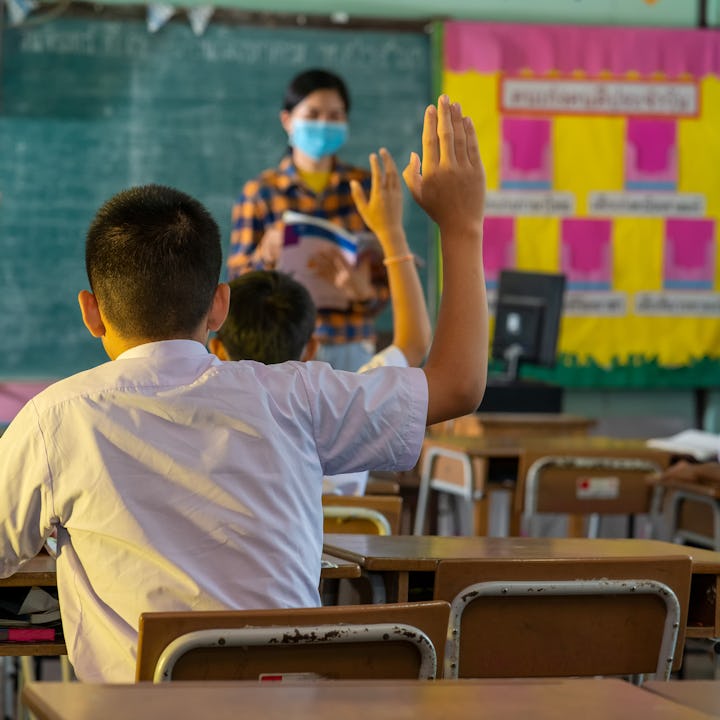Schools Across The U.S. Are Reporting Drastic Drops In Attendance
Chronic absenteeism has become prevalent across the nation in the wake of COVID-19 and it hurts all kids.

At this point, it feels almost insulting to report on the ramifications that COVID-19 has had on our education system.
It’s no secret that even with all the resources in the world, navigating blended or hybrid learning, your district’s specific quarantine and masking rules, and maintaining some shred of sanity while making sure your child is staying on track with their classwork is an impossible feat. It has both parents and teachers exhausted, and, as numerous surveys have shown, a sharp increase in chronic absenteeism.
According to Education Week, teachers across the country reported a 39% rise in absence rates. Remote instruction seemed to play a role in a school’s absentee levels, with 64% of educators that taught in schools that predominantly used remote learning reporting a rise in absenteeism versus 51% of teachers who taught mostly in-person.
Experts also note that quarantining after contact with an infected person is one of the biggest reasons behind this increased amount of absences. The mental exhaustion that comes along with, you know, living throughout several global crises at once, is also a culprit behind the drop in regular school attendance, as kids are dealing with a steep increase in mental health issues.
This trend has been echoed throughout the country. The Los Angeles Times reported that nearly half of Los Angeles Unified School District (LAUSD) students have been chronically absent for the 2021-2022 school year.
Of those students, LAT noted that “the impact of missed school is being borne most heavily by the most vulnerable student groups.” In Los Angeles, the chronic absence rate — which is if a student misses 9% or more of the school year — is 57% for Black students, 49% for Latinos, and 68% for unhoused students.
New York City, the nation’s largest school district, saw its overall attendance rate plummet below 70% after classes started back up post-holiday season, which coincides with the Omicron surge. Before the pandemic, the district reported 91% regular attendance.
The increase in absenteeism has put educators in a difficult position (as if their position wasn’t already difficult enough throughout the pandemic) of deciding whether or not to move forward with lesson plans. Many teachers feel the pressure to keep moving along the curriculum to keep their students’ education — and funding — on track; several teachers have cited spring state assessments as a reason to continue the curriculum as planned despite increasing absentee levels.
Catching a child that was absent up to speed is also more difficult when it is a wave of kids as opposed to one or two students. “When I have five or six of those … it does take a lot out of the lesson and it slows down the pace of the entire class,” said Georgia teacher Mary Helen Bowen.
Some kids are able to catch up if they have parents or guardians who are able to assist, but that is not always an option for all families.
Like every part of the pandemic, this often impacts students from the most vulnerable communities and ultimately increases academic gaps. According to Education Week, the gap between students in majority-Black schools and students in majority-white schools is now three months wider than before the pandemic. This can lead to an increase in dropouts, with federal data suggesting that 1.7 to 3.3 million 8th-12th graders could drop out due to the pandemic.